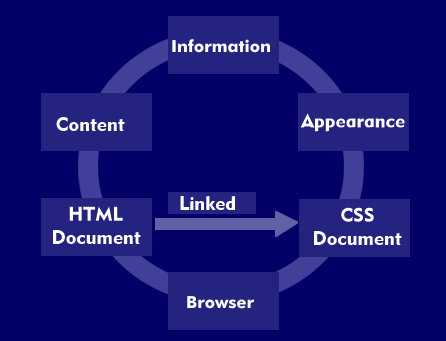cascading style sheet (Internet) (CSS)
A style sheet is a format template. The Cascading Style Sheets( CSS) specified by the W3C consortium define a simple grammar or language that refers to the statement made in the style sheet. It specifies what can be expressed and how it can be expressed. Cascading Style Sheets (CSS) are used to separate web documents into structure and appearance. The design elements are bundled in their own style sheets and do not extend the scope of the HTML pages.
CSS specifications allow text and appearance attributes to be grouped into classes and linked to HTML pages as documents. Here, the design attributes are specified in the CSS documents, while the content attributes are specified in the HTML documents. The appearance attributes include the font, font size, line spacing, color, and other typographic attributes. Style sheets consist of a list of rules that describe to the Web browser how to display certain elements of a Web page. These graphical and typographic attributes are defined centrally, making them easy to maintain. Cascading style sheets can operate with absolute length units, for example, in the font size units point or inch, but also in pixels and in relative length units.
The advantage of cascading style sheets is that the individual elements of a web page are defined and these documents can be accessed during design without having to redefine each element. Cascading Style Sheets can be applied to all HTML standards from version 2.0 (CSS2) onwards. CSS3 is a further development that has been incorporated into W3C recommendations.

